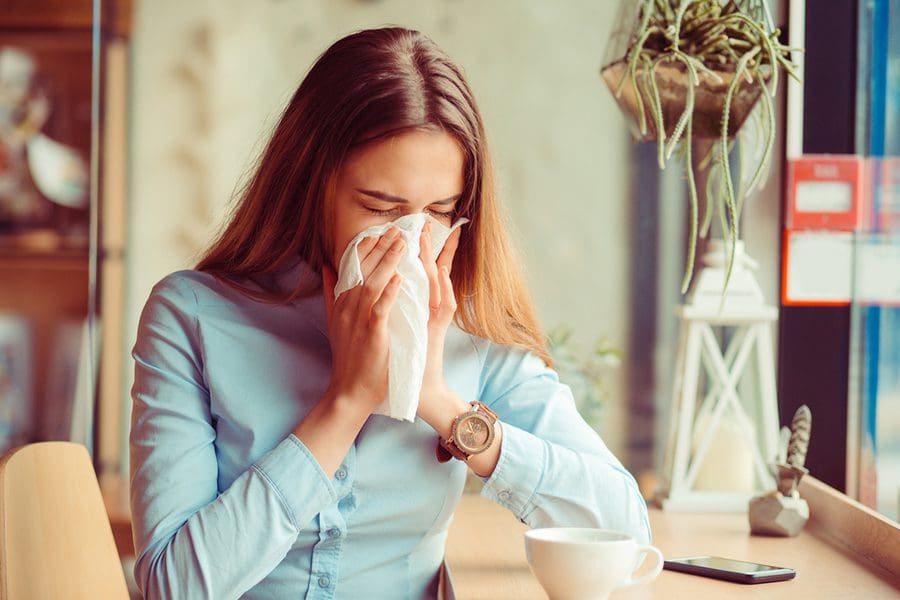You’ve been there — a sneeze or a dry cough one day recently set off alarm bells in your head about whether it’s finally happened — have you contracted the coronavirus? Then again, maybe a sneeze is just a sneeze. It’s hard to know when to worry if you’re prone to dealing with allergies during a pandemic that shares many similar symptoms. Yet, there is a way to discern the difference, and here’s how:
Some key symptoms are characteristic of the coronavirus that don’t tend to occur for an allergy flare-up. The significant symptoms you should watch for that are unique to this virus are:
- Difficulty breathing, wheezing, or other bronchitis like symptoms
- Reduced or absent sense of smell or taste
- GI disturbance such as diarrhea or vomiting
If any of these symptoms present themselves, immediately reach out to your doctor.
With allergies, different symptoms present themselves that have not been seen for coronavirus. The presence of these symptoms is a steady sign that you’re struggling with allergies, not the coronavirus:
- Sneezing
- Eye redness and itchiness
- Runny nose
If you’re experiencing these symptoms, it’s more likely you’re dealing with allergies. When trying to differentiate between an allergy flare-up and the coronavirus, it’s essential to consider your own personal history with allergies. When your allergies flare up, what are the common symptoms that tend to reoccur every time? From this list of recurring symptoms, you can compare your current symptoms to identify anything out of the ordinary.







